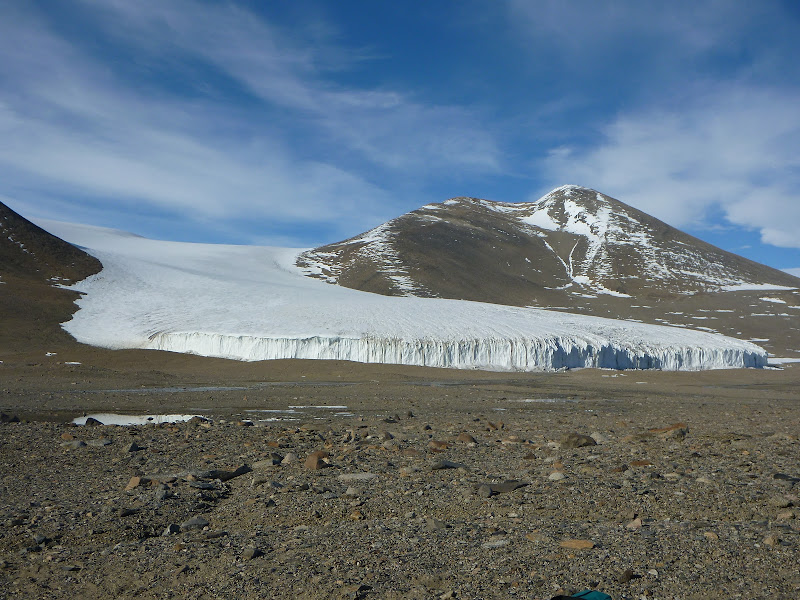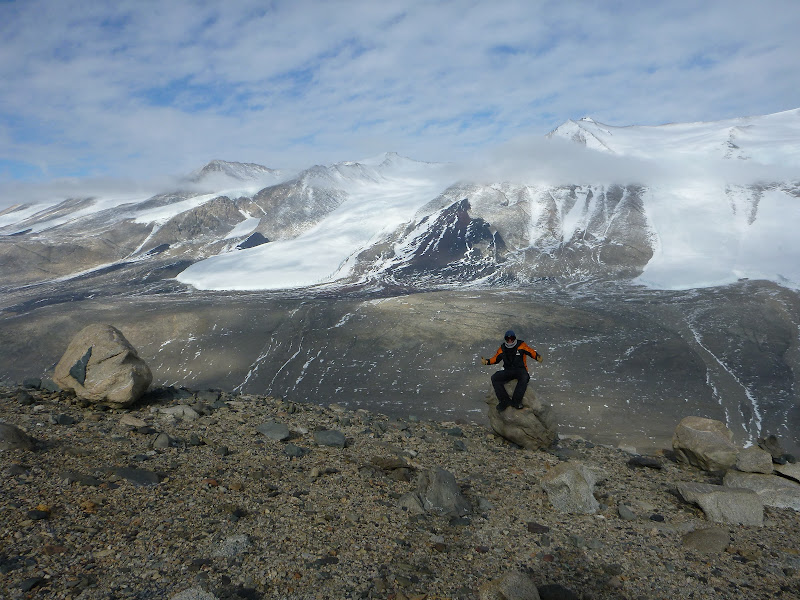The McMurdo Dry Valleys in Antarctica are one of the worlds most extreme deserts and are said to have an environment closer to that of the planet Mars than any other place on earth. With a rocky and barren landscape battered by extreme katabatic winds, the dry valleys provide an interesting if not hostile backdrop for many science projects over the antarctic summer.

Glaciers and Rock
I have been lucky enough to visit the dry valleys on 3 occasions where I have captured images of the valleys during different conditions. The photo above shows the contrast between a teardrop shaped glacier and the dry rocky ground. My video below shows spectacular helicopter footage of the Dry Valleys during a rare moment when there is "lots" of snow on the ground, and the glaciers are less distinguishable:
Antartic Dry Valleys by Helicoper
This video was shot while conducting maintenance on Antarctica New Zealand's three radio repeater sites. These sites are used to relay radio communications between science teams operating in the Dry Valleys and the Antarctica New Zealand base on Ross Island. Because it was early in the summer season the temperatures were rather cold with wind chills at Mt Mule getting below -40C (also -40F)
Map of the Dry Valleys
A satellite view of the McMurdo Dry valleys, the McMurdo Sound and Ross Island along with the route of the helicopter and locations of the radio repeater sites. It is worth zooming in to the Dry Valleys and exploring the martian-like landscape.

Me sitting on a rock at the JJ Thomson site (start of the video) with the glaciers coming down into Taylor valley in the background.

Mummified weddell seals
This photo shows one of the famous mummified weddell seals of the Dry Valleys. There are apparently hundreds of specimens that have crawled up to 41 miles inland and to elevations up to 5,900 feet above see level. Why these seals have wandered so far from the ocean has remained a mystery.


No comments:
Post a Comment